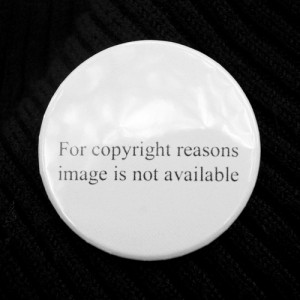 As it currently stands UK copyright law does not allow a specific exception for parody use. This means that someone desiring to make a parody will have to ask for the copyright holder’s permission or attempt to procure a licence from that holder. The grant of a licence is at the complete discretion of the holder. Therefore a parodist who does not obtain permission or a licence runs the risk of legal action and potentially damages.
As it currently stands UK copyright law does not allow a specific exception for parody use. This means that someone desiring to make a parody will have to ask for the copyright holder’s permission or attempt to procure a licence from that holder. The grant of a licence is at the complete discretion of the holder. Therefore a parodist who does not obtain permission or a licence runs the risk of legal action and potentially damages.
Proposed Parody Provision for the UK
There is, however, hope on the horizon for the prospective parodist. During the process of the implementation of the Enterprise and Regulatory Reform Act 2013 the government announced that it intended to introduce an exception to allow for parody. This exception should be implemented around October 2013. Yet, there’s a catch. The provision will be implemented by secondary legislation in the form of a statutory instrument. This has created a lot of noise about the lack of parliamentary scrutiny the provision will be subject to. The protest mainly comes from the associations representing rights holders. It is felt that this area of law will suffer catastrophic oversight or deliberate omission.
Both parodists and rights holders alike are eager to ascertain the content of the parody provision. We have been given something of a preview when a potential provision was tabled in January of this year:
30A Caricature, parody and pastiche
(1) Fair dealing with a work for the purposes of caricature, parody or pastiche does not infringe any copyright in the work provided that—
(a) it is done in accordance with the rules of the genre;
(b) it is accompanied by sufficient acknowledgement; and
(c) the work has been made available to the public.
(2) Section 30(1A) shall apply to subsection (1) as it does to section 30(1).
The exception would form as a ‘fair dealing’ limitation within the current Copyright, Designs and Patents Act 1988. The concern with the above proposal is the lack of detail and direction in the provision. It is unclear quite how the provision would work in practice. Nothing defines the scope and application of parody or what ‘rules of the genre’ mean. As mentioned in the foregoing, currently a potential parodist requires either the consent or a license from the holder. It is unclear whether ‘the rules of the genre’ require a parodist to obtain the consent. Significantly there is no mention of a license. The ability of a creator to license work can be a highly valuable source of income. It is unclear whether the government seeks to remove the need for permission or license. If it is removed it appears that the parodist will able to commercially broadcast their works without the bureaucracy or payment of royalties.
An American Influence?
The public outcry is understandable; parodists and rights holders do not want to have to wait for a jurisprudence to slowly evolve on the meaning of ‘the rules of the genre’. Parody can be big business, especially online, and it should not have to stagnate whilst lawyers attempt to define what the rules are. It is possible, however, to attempt to predict or anticipate what the government intends. At this point it may perhaps be of importance to pay credence to the very words of the Prime Minister. In November 2010 David Cameron stated that the government would be reviewing the current IP laws specifically to encourage “the sort of creative innovation that exists in America.” This begs the question: are “the rules of the genre” to be similar to those in operation in America? If so, what system exists in America for parody?
The American Approach to Parody
Whilst by no means seminal, the relatively recent case of Mattel, Inc. v Walking Mountain Productions, 353 F.3d 792, (9th Cir. 2003) forms as a superlative archetype of parody in practice in an American context. Mattel, Inc. v. Walking Mountain Productions concerned the parodic use of Barbie dolls. A professional photographer, Thomas Forsythe, produced a series of photographs entitled “Food Chain Barbie.” Within the gallery contained pictures of Barbie dolls being attacked by vintage kitchen appliances. The purpose of the photos was to highlight the objectification of women projected by the flawless images of Barbie dolls. Mattel, the producer of Barbie, less than pleased with the perceived ridicule of the Barbie doll sued Forsythe for copyright infringement. This was despite the fact that at the time Forsythe was sued he had earned less than $4,000 dollars in revenue from the photographs.
The case eventually ended up in the Ninth Circuit of the US Court of Appeals. The court held that Forsythe’s photographs were acceptable use of parody under the fair use defence. Under US law there is no specific exception for parody rather the fair use defence offers an open list of permissible purposes. These permissible purposes are subject to analysis and scrutiny of the court in accordance with four factors. These factors are found in the Copyright Act of 1976 under § 107 and must be taken into account in any fair use determination:
(1) the purpose and character of the use, including whether such use is of a commercial nature or is for nonprofit educational purposes;
(2) the nature of the copyrighted work;
(3) the amount and substantiality of the portion used in relation to the copyrighted work as a whole; and
(4) the effect of the use upon the potential market for or value of the copyrighted work.
In the context of parody US courts put a great emphasis on the first factor. The court has to decide whether the parody adds a contemporary element to the original. Essentially whether there has been a transformative use by giving it a different purpose or character. The court found that Forsythe’s photos easily met this standard. The photos were transformative because they turned the image of Barbie “on its head.” The stereotypical depiction of Barbie as the “ideal American woman” was transformed into a critique of the dolls ability to objectify women. Importantly Forsythe’s work formed a significant commentary with an over-arching theme running through every photograph in his exhibit. The classic perception of Barbie had truly been transformed.
The second element weighed against Forsythe. However, the court accepted that it is difficult to put much emphasis on this element considering the central element of a parody is its ability to copy something already known to the public.
The third factor, the amount and substantiality of the original, weighed in Forsythe’s favour. Linking back to the transformative use, the court held that the greater the transformation the greater the amount of the original could be used. Generally the courts will take a strict approach that the parodist should use an absolute minimum of the original. However, where there has been a substantial transformation the parodist is able to use more than the absolute minimum.
The fourth factor is undoubtedly the most important element in the fair use analysis. It requires the court to analyse the effect of the parody on the original creator’s market. Essentially, does the parody substitute for the original and will this substitute have a detrimental impact on the original creators ability to profit. The court held that this weighed in Forsythe’s favour. The criticism and perceived ridicule would not impact on the sale of the Barbie dolls. In fact Forsythe was appealing to an entirely different market than the average Barbie user. The photos were clearly intended for an adult audience. Further it did not impact a derivative market of Barbie products.
Guidance on the Rules of Parody: an American Perspective
Although it is unclear exactly what is meant by “the rules of the genre” the American approach is able to provide some form of guidance. On the basis of the American formula before a budding parodist publishes her work she should ask the following:
- Has there been a transformative use? Specifically, has there been a contemporary element or a radical perspective taken on the original. Does the work incorporate a significant commentary, critique or over-arching theme?
- What is the amount and substantiality of original used? There should be an absolute minimum used. However, the greater the transformation the greater the parodist can exceed the absolute minimum standard.
- Which markets is the product likely to produce profit in? Is this the same market the original work operates in? Can it affect another derivative market related to the original?
Of course the above guidance is complete conjecture. There is nothing definitive to suggest that the government will follow the American model. Yet, there are lessons to be learned from our trans-Atlantic partners; they have the benefit of an established jurisprudence on parody. The American approach has had the advantage of time-tested case law. To the contrary, in the UK there is little case law and it is quite unclear what we will see in October. What is clear is that if the draft proposal is implemented in its current form legal certainty will suffer. The lack of legal certainty in the area of copyright exceptions would be a disaster for both rights holders and parodists.
Legal Certainty, Parody and Freedom of Expression
Parody powers creativity by incentivizing new forms of expression, critiques, truths, comedies and personal self-fulfillment. If the rules are unclear and lack legal certainty freedom of expression will suffer. When you cannot predict the weight that may be accorded to a given speech or understand how the law operates this can have a chilling effect. It can lead to a form of self-censorship an effect subversive to the fundamental aim of free expression. This is by no means scaremongering. The Mattel litigation should sound as a harbinger to potential parodists. Forsythe’s legal fees and court costs amounted to over $2,000,000 dollars. Forsythe was lucky that he met “the rules of the genre” and Mattel were ordered to pay the amount. Another parodist might not be so fortunate. The prudent and risk-averse parodist concerned with a multi-million dollar lawsuit, even if successful, will desist from using the speech at all. Such a result is regressive and would harm copyright law and parody in the UK. The government should be aiming to implement a sustainable framework that is flexible, modern and robust. Regardless of whether “the rules of the genre” are to be conservative or liberal in application, they have to be clear, understandable, certain and work commercially.
Image courtesy of gaelx on Flickr
